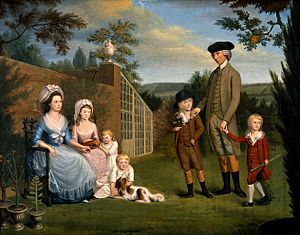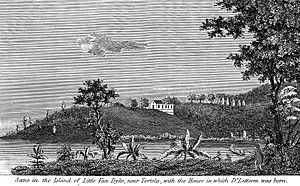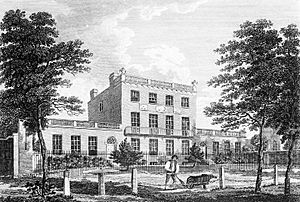John Coakley Lettsom facts for kids
Quick facts for kids
John Coakley Lettsom
|
|
|---|---|
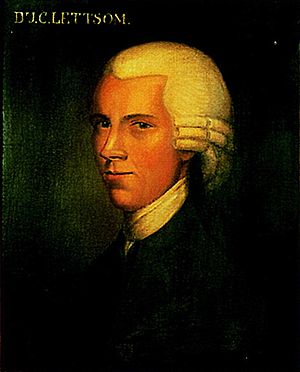 |
|
| Born | 1744 |
| Died | 1 November 1815 |
| Known for | Founding Medical Society of London |
John Coakley Lettsom (born 1744 – died 1 November 1815) was an important English doctor and a kind-hearted person who helped many others. He was born on Little Jost Van Dyke in the British Virgin Islands. His family were Quakers, a religious group known for their peaceful beliefs. John grew up to become a strong supporter of ending slavery, known as an abolitionist.
In 1773, he started the Medical Society of London. He believed that doctors, surgeons, and pharmacists should all work together. This society is the oldest of its kind in the United Kingdom and is still active today. John Lettsom was a key figure in the society, serving as its founder, president many times, and a generous supporter.
Contents
His Life Story
John Coakley Lettsom was born in 1744 on Little Jost Van Dyke, an island in the British Virgin Islands. He was one of seven sets of twin boys born to Edward and Mary Lettsom, but only he and one brother survived. When John was just six years old, he was sent to England to get an education.
While at school in Lancashire, young John's lively personality caught the eye of a Quaker preacher named Samuel Fothergill. Samuel introduced John to his brother, Dr John Fothergill, a well-known doctor in London. After finishing an apprenticeship with a pharmacist in Yorkshire, Lettsom moved to London in 1766. With Dr. Fothergill's help, he began his medical training at St Thomas' Hospital.
His studies were paused when his father died, and John had to return to Tortola in the British Virgin Islands. There, he made an important decision: he freed the enslaved people he had inherited from his father. He also became the only doctor on the islands at that time, providing medical care to everyone. He earned a lot of money quickly, which allowed him to go back to Europe and continue his education. John Coakley Lettsom studied at Leiden University in the Netherlands, where he earned his medical degree in 1769. His special project was about the natural history of the tea plant.
Lettsom became good friends with famous people like Benjamin Franklin and William Thornton.
In 1779, he bought land in Camberwell, a quieter area away from the busy, polluted city of London. He built a large house there called a villa at Grove Hill. This villa was later taken down, but one of its smaller buildings, 'The Hermitage', still stands today. Some local streets and gardens are named after him, like Lettsom Street and Lettsom Gardens.
His Important Career
Lettsom's career took off when he became a member of the Royal College of Physicians in London. He also married Ann (Nancy) Miers, who was known to be a very kind person.
By the time he was 30, John Lettsom was famous as a doctor, a writer, and a Fellow of the Royal Society. He had also started several important organizations. These included the General Dispensary (a place where people could get medical care) and the Medical Society of London. He helped create the Royal Humane Society in 1774, which rescued people from drowning. He also supported the first sea-bathing hospital in Margate in 1791.
Lettsom was a big supporter of the Royal Jennerian Society, which promoted vaccination. He also helped societies that supported widows and orphans of doctors, people in debt, and homeless children. He wrote many articles and letters, giving "Hints" and ideas to improve society. He promoted Sunday schools, encouraged women to work, and helped the blind. He also supported soup kitchens and even a plant called the mangel-wurzel. He spoke out against fake medicines and excessive drinking.
John Lettsom was a lot like Sir Hans Sloane, another famous doctor from an earlier time. Both were interested in many things, including medicine, helping others, plants, and minerals. Lettsom even paid for trips to find new plants and grew American plants in his garden.
He was the main force behind the London Medical Society from 1773 until his death. His ideas and example inspired many other doctors, like Dr. Thomas Pettigrew and Dr. Henry Clutterbuck. In 1791, Lettsom won a special award, the Fothergillian Prize, for his work on "Diseases of Great Towns and the Best Means of Preventing them."
He was also chosen as a member of the American Philosophical Society in 1787 and the American Academy of Arts and Sciences in 1788. For some time, he lived in Newington Green, a village known for its independent thinkers. There, he met people like Mary Wollstonecraft, who were also working for social change.
His Sense of Humour
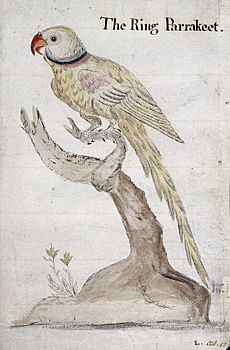
John Lettsom was known for his sense of humour. He is said to have written a funny poem about himself:
I, John Lettsome,
Blisters, bleeds and sweats 'em.
If, after that, they please to die,
I, John Lettsome.
This poem is a playful way of saying that doctors do their best to treat patients (using methods like blistering, bleeding, and sweating, which were common back then). But sometimes, despite their efforts, patients still pass away.
His Fight Against Slavery
John Lettsom was a well-known abolitionist, meaning he worked to end slavery. In 1767, after his father died, he returned to the British Virgin Islands. He found that he had inherited a share of his father's enslaved people. Without hesitation, he immediately set them free.
He then started a medical practice on Tortola. As the only doctor on the island, he quickly earned a lot of money. He gave half of it to his mother and then returned to London.
Later, his friend William Thornton asked for his advice about starting a new colony in Africa for freed enslaved people. Lettsom advised against it. Instead, he suggested using the money to buy and free enslaved people in North America.
Near the end of his life, a strange event happened. His son, Pickering Lettsom, went to Tortola and married a wealthy widow named Ruth Georges. She had inherited about 1,000 enslaved people from her grandfather. Pickering died about a month after the marriage, and his new wife died a few months later. She left all her property, including the enslaved people, to John Lettsom. So, John Lettsom, who had spent his life freeing enslaved people, suddenly found himself owning 1,000 of them. He died before he could decide what to do, and they were then inherited by his grandson, William Pickering Lettsom.
His Interest in Insects
John Lettsom was also an entomologist, someone who studies insects. He wrote a book called The naturalist's and traveller's companion. This book gave instructions on how to collect and preserve natural history items and how to learn more about human knowledge in general.
See also


